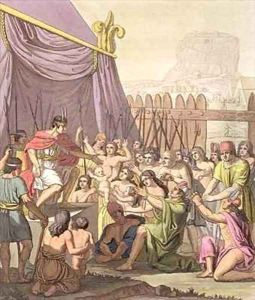Fumagalli Gerolamo Paintings
Gerolamo Fumagalli was an Italian painter, primarily known for his religious and historical scenes. Born in 1822 in the city of Monza, Lombardy, which was then part of the Austrian Empire, Fumagalli showed an early interest in art. His initial training took place at the Brera Academy in Milan, where he studied under prominent artists of the time. The academy was a hub for artistic training in the region, and it played a critical role in shaping Fumagalli's early career.
Fumagalli's work is characterized by its meticulous attention to detail and its neoclassical style, which was quite popular during the mid-19th century. He took inspiration from the Renaissance masters and was known to create works that had a strong narrative element, often with a moral or religious message. His paintings typically featured dramatic lighting and rich, vibrant colors, which helped to enhance their emotional impact.
Throughout his career, Fumagalli received commissions for various churches and public buildings. His religious works were particularly appreciated for their devotional quality and technical excellence. He also painted portraits and genre scenes, which were well-received by patrons and the public alike. Additionally, Fumagalli participated in numerous exhibitions, gaining recognition not only in Italy but also abroad.
Gerolamo Fumagalli's contribution to Italian art in the 19th century was significant, as he upheld the classical tradition during a time of artistic transition. Despite the rise of modern movements such as Realism and Impressionism, Fumagalli remained committed to the academic style and continued to receive commissions for his work. He passed away in 1893, leaving behind a legacy of craftsmanship and a collection of works that are still appreciated for their beauty and historical value. While he may not be as widely known today as some of his contemporaries, his paintings continue to be studied and admired for their technical skill and artistic merit.
